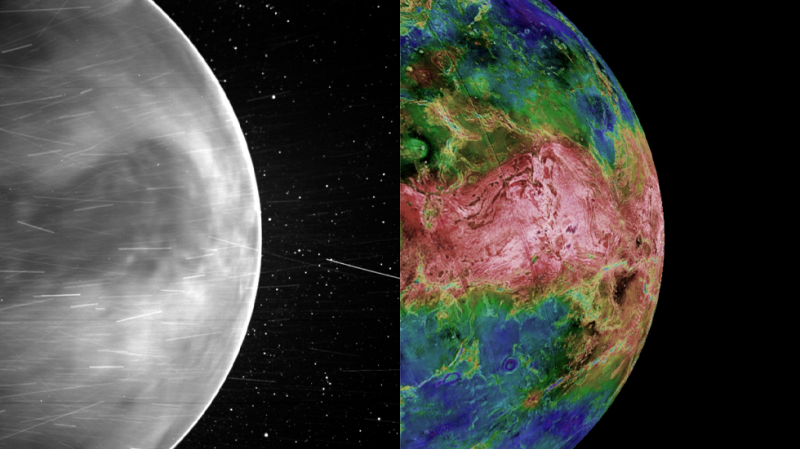
NASA has made public a video and some photos of the surface of Venus, taken by the Parker Solar Probe on a flyby last year. Scientists hope the first images of this kind will help them learn more about the most earth-like planet in the solar system.
The US space agency’s Parker Solar Probe (PSP) took the images on two flybys of Venus in 2020 and 2021, but it wasn’t until Wednesday that a full analysis was published in the journal Geophysical Research Letters and announced on NASA’s website.
“Venus is the third brightest thing in the sky, but until recently we have not had much information on what the surface looked like because our view of it is blocked by a thick atmosphere,” said Brian Wood, physicist at the Naval Research Laboratory in Washington, DC, who was the lead author on the study. “Now, we finally are seeing the surface in visible wavelengths for the first time from space.”
The PSP was launched in 2018 with the mission of exploring the corona of the sun. Its orbit has taken it past Venus on multiple occasions. Scientists wanted to use its wide-field imager device, called WISPR, to measure the speed of clouds on Venus. Instead, the probe “saw” through to the surface of the planet, during the July 2020 flyby.
So striking were the images, the WISPR team turned the cameras back on during the next flyby in February 2021, when the probe got a perfect view of the nightside of Venus.
“The images and video just blew me away,” Wood told NASA.
The probe revealed “a faint glow from the surface that shows distinctive features like continental regions, plains, and plateaus,” while a “luminescent halo of oxygen in the atmosphere can also be seen surrounding the planet,” according to NASA.

Light visible to the human eye ranges between 380-750 nanometers in wavelength. The probe used a spectrum ranging from 470-800 nanometers, approaching infrared, to catch the glow caused by the incredible heat on the planet’s surface.
“The surface of Venus, even on the nightside, is about 860 degrees,” Wood said, using the Fahrenheit scale. “It’s so hot that the rocky surface of Venus is visibly glowing, like a piece of iron pulled from a forge.”
Since higher altitude features on the surface of Venus are cooler than the lowlands, they showed up as darker patches in WISPR images. The footage showed some prominent regions previously seen only in radar imagery, such as Aphrodite Terra, Tellus Regio, and Aino Planitia.
NASA currently plans to take more pictures of Venus with WISPR when the PSP conducts its seventh and final flyby in November 2024. The probe’s findings have also inspired the European Space Agency (ESA) to gather similar data on its own upcoming missions.
© 2022, paradox. All rights reserved.





